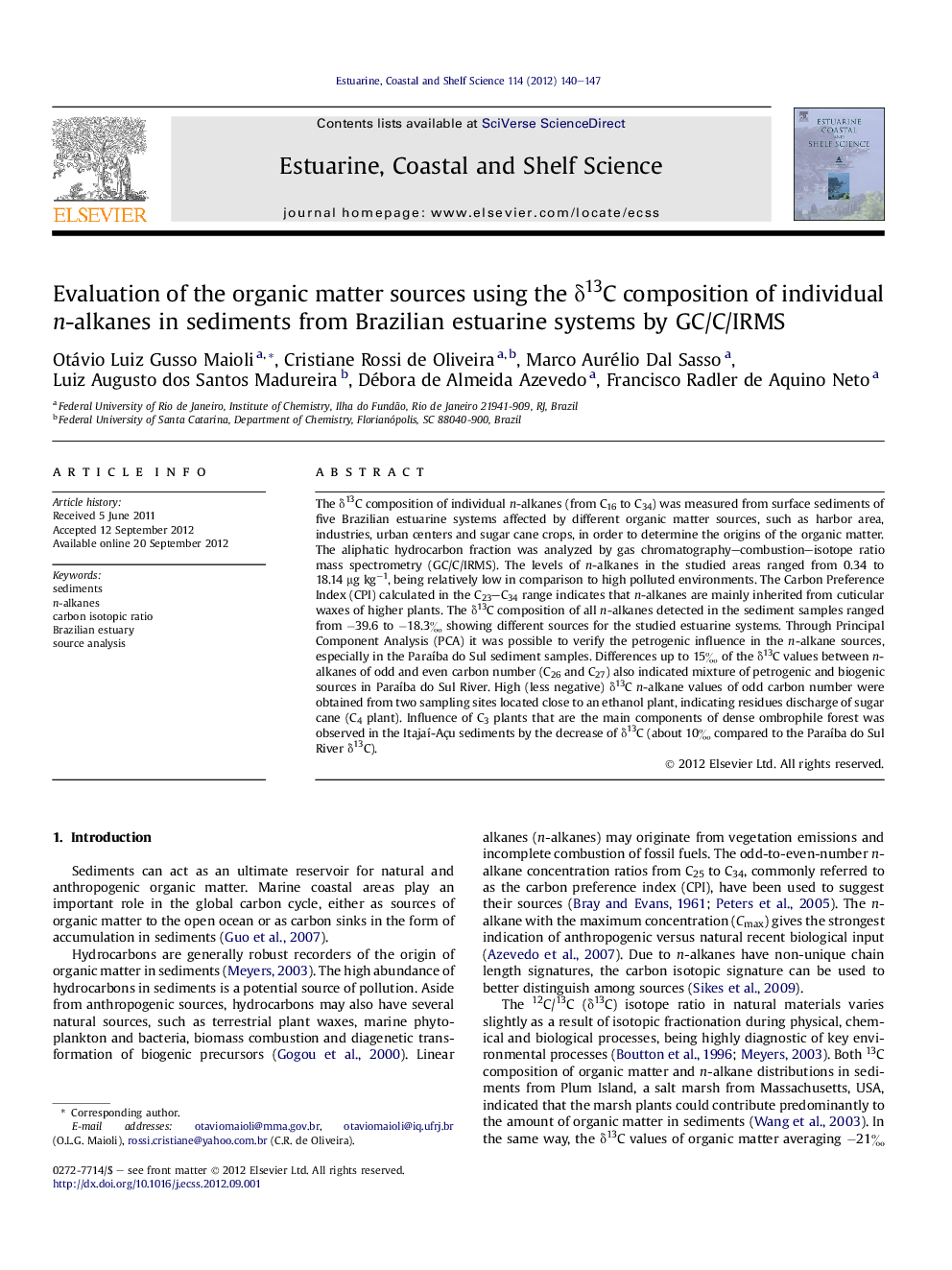| Article ID | Journal | Published Year | Pages | File Type |
|---|---|---|---|---|
| 4540035 | Estuarine, Coastal and Shelf Science | 2012 | 8 Pages |
The δ13C composition of individual n-alkanes (from C16 to C34) was measured from surface sediments of five Brazilian estuarine systems affected by different organic matter sources, such as harbor area, industries, urban centers and sugar cane crops, in order to determine the origins of the organic matter. The aliphatic hydrocarbon fraction was analyzed by gas chromatography–combustion–isotope ratio mass spectrometry (GC/C/IRMS). The levels of n-alkanes in the studied areas ranged from 0.34 to 18.14 μg kg−1, being relatively low in comparison to high polluted environments. The Carbon Preference Index (CPI) calculated in the C23–C34 range indicates that n-alkanes are mainly inherited from cuticular waxes of higher plants. The δ13C composition of all n-alkanes detected in the sediment samples ranged from −39.6 to −18.3‰ showing different sources for the studied estuarine systems. Through Principal Component Analysis (PCA) it was possible to verify the petrogenic influence in the n-alkane sources, especially in the Paraíba do Sul sediment samples. Differences up to 15‰ of the δ13C values between n-alkanes of odd and even carbon number (C26 and C27) also indicated mixture of petrogenic and biogenic sources in Paraíba do Sul River. High (less negative) δ13C n-alkane values of odd carbon number were obtained from two sampling sites located close to an ethanol plant, indicating residues discharge of sugar cane (C4 plant). Influence of C3 plants that are the main components of dense ombrophile forest was observed in the Itajaí-Açu sediments by the decrease of δ13C (about 10‰ compared to the Paraíba do Sul River δ13C).
